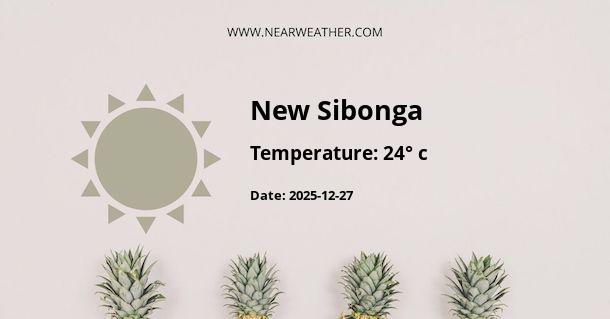The Climate and Weather of Sibonga, Philippines
Sibonga is a charming municipality located in the Cebu province of the Philippines. Situated in the Visayas region, Sibonga boasts a tropical climate that is influenced by its proximity to the equator and the Pacific Ocean. The weather in Sibonga is characterized by warm temperatures, high humidity, and distinct wet and dry seasons throughout the year.
Temperature
The average temperature in Sibonga remains fairly consistent throughout the year, with only slight variations between the seasons. The warmest months are typically from April to June, with average daytime temperatures ranging from 30°C to 33°C (86°F to 91°F). The coolest months are from December to February, with average daytime temperatures ranging from 25°C to 28°C (77°F to 82°F). The temperature at night is usually a few degrees lower than during the day.
Sibonga experiences relatively high humidity levels, with an average relative humidity ranging from 75% to 85%. The combination of warm temperatures and high humidity can make the weather feel even hotter, particularly during the summer months.
Rainfall
Sibonga has a distinct wet and dry season. The wet season typically begins in June and extends until November, with the peak rainfall occurring between July and October. During this period, Sibonga experiences frequent rain showers and occasional thunderstorms. The average monthly rainfall during the wet season ranges from 150mm to 250mm.
The dry season, on the other hand, starts in December and lasts until May. During this time, the amount of rainfall significantly decreases, and Sibonga experiences mostly sunny and dry weather. The average monthly rainfall during the dry season is around 50mm to 100mm.
It is worth noting that while Sibonga experiences a distinct wet and dry season, it can still receive sporadic rainfall even during the dry season. Visitors should always be prepared for sudden showers and have appropriate rain gear on hand.
Tropical Storms
Like many other parts of the Philippines, Sibonga is also prone to tropical storms and typhoons. The typhoon season typically occurs from June to November, coinciding with the wet season. These storms can bring heavy rains, strong winds, and potential flooding to the area. Visitors should stay informed about weather forecasts and follow any advisories or warnings issued by local authorities during this period.
Best Time to Visit Sibonga
The best time to visit Sibonga is during the dry season, which runs from December to May. This period offers the most sunshine and pleasant weather for outdoor activities such as beach visits, hiking, and exploring the local attractions. The months of January to April are particularly ideal, as they generally have lower humidity levels and milder temperatures.
Climate Summary
| Month | Average Temperature (°C) | Average Rainfall (mm) |
|---|---|---|
| January | 27 | 50 |
| February | 27 | 30 |
| March | 28 | 40 |
| April | 29 | 40 |
| May | 30 | 50 |
| June | 31 | 150 |
| July | 31 | 200 |
| August | 31 | 200 |
| September | 30 | 200 |
| October | 30 | 200 |
| November | 29 | 150 |
| December | 28 | 80 |
"Sibonga's tropical climate offers warm temperatures throughout the year, with distinct wet and dry seasons. Visitors can enjoy the beautiful beaches and outdoor activities during the dry season, while being prepared for occasional rain showers and tropical storms." - Weather Expert
Overall, Sibonga's climate and weather provide a pleasant tropical experience for residents and visitors alike. The municipality's warm temperatures and lush vegetation contribute to its natural beauty and make it an attractive destination for those seeking a tropical getaway.
A - New Sibonga's Latitude is 7.560900 & Longitude is 125.929802.
A - Weather in New Sibonga is 31° today.
A - Climate Conditions in New Sibonga shows overcast clouds today.
A - Humidity in New Sibonga is 67% today.
A - Wind speed in New Sibonga is 8.1 km/h, flowing at 231° wind direction. today.
